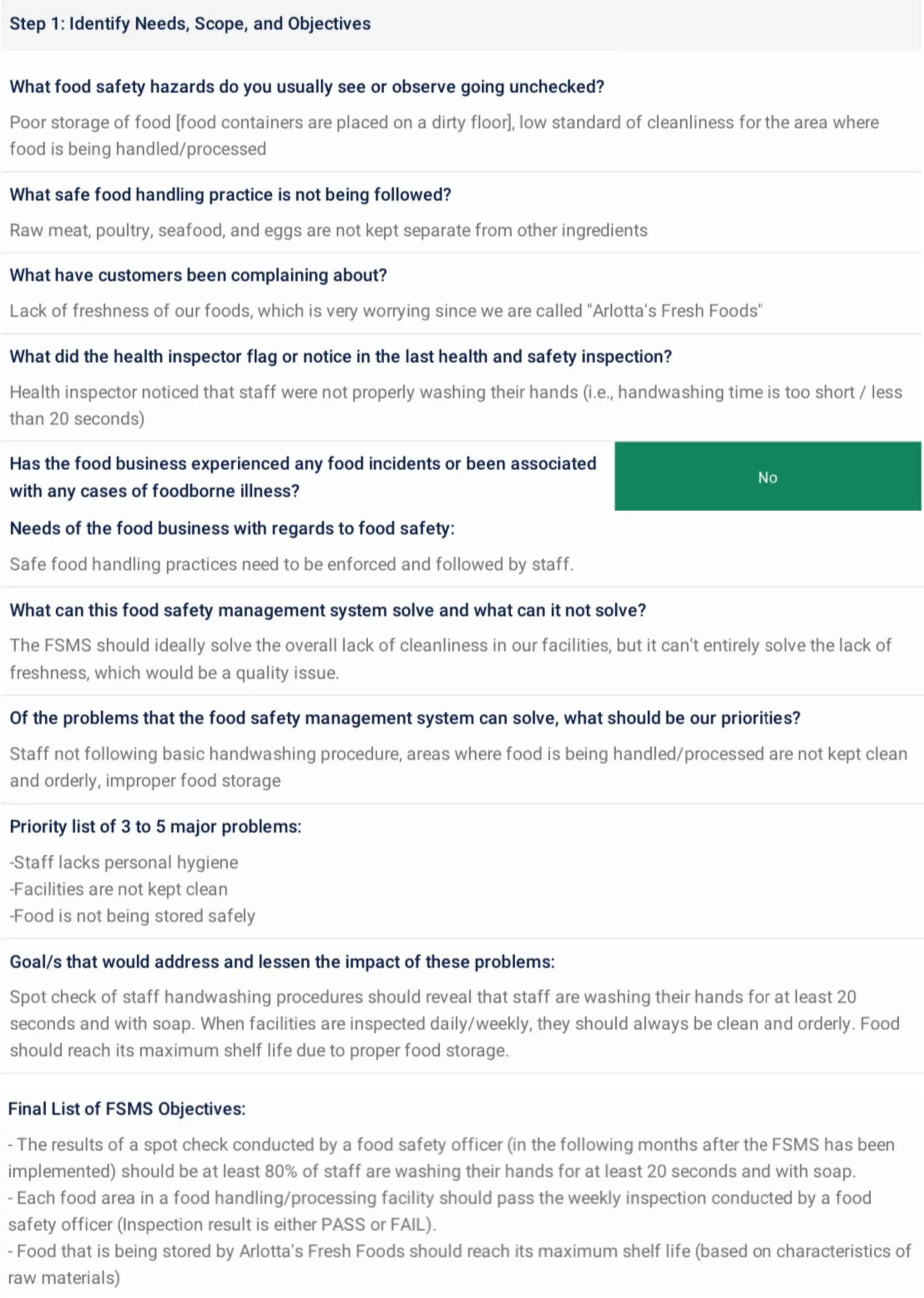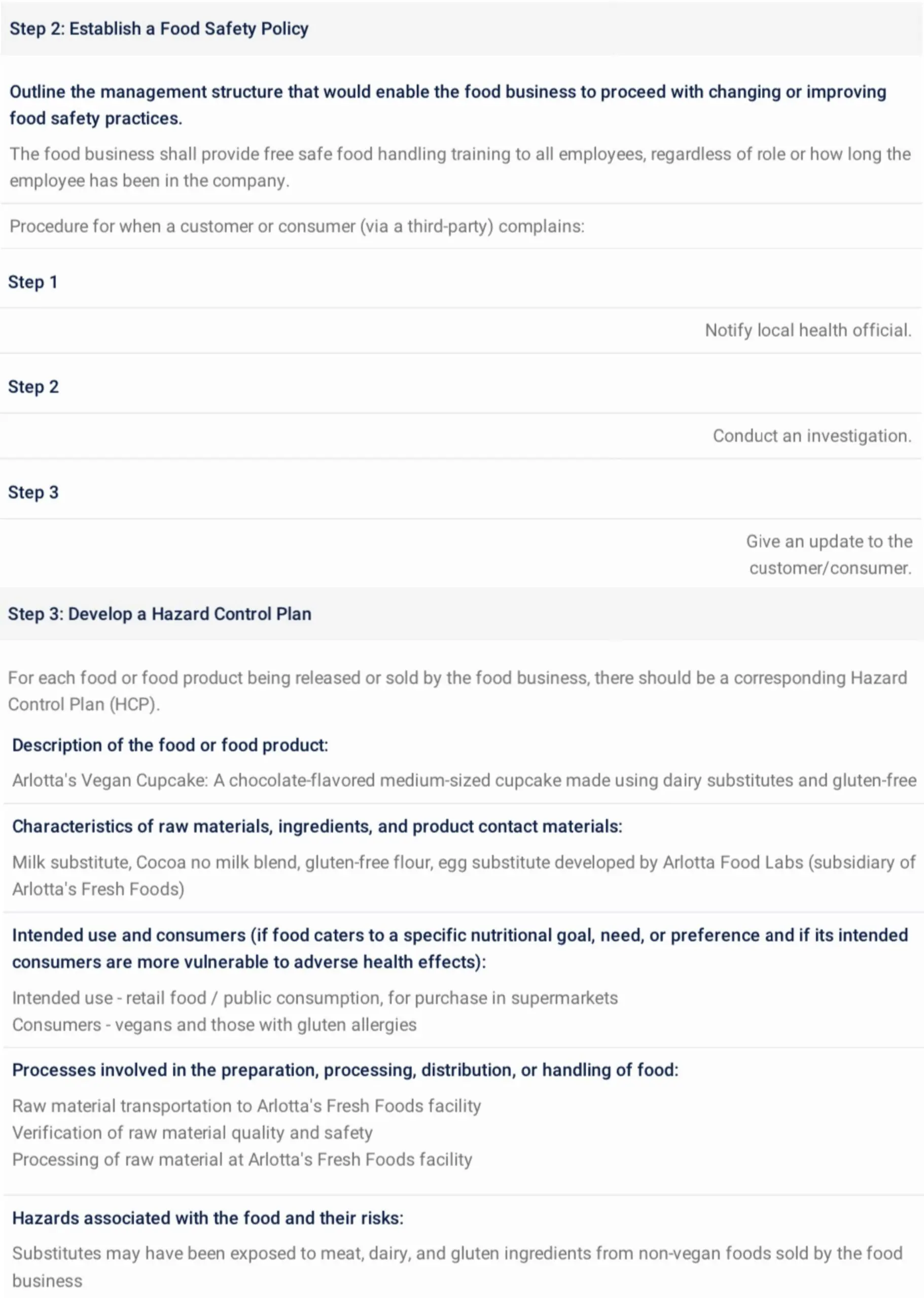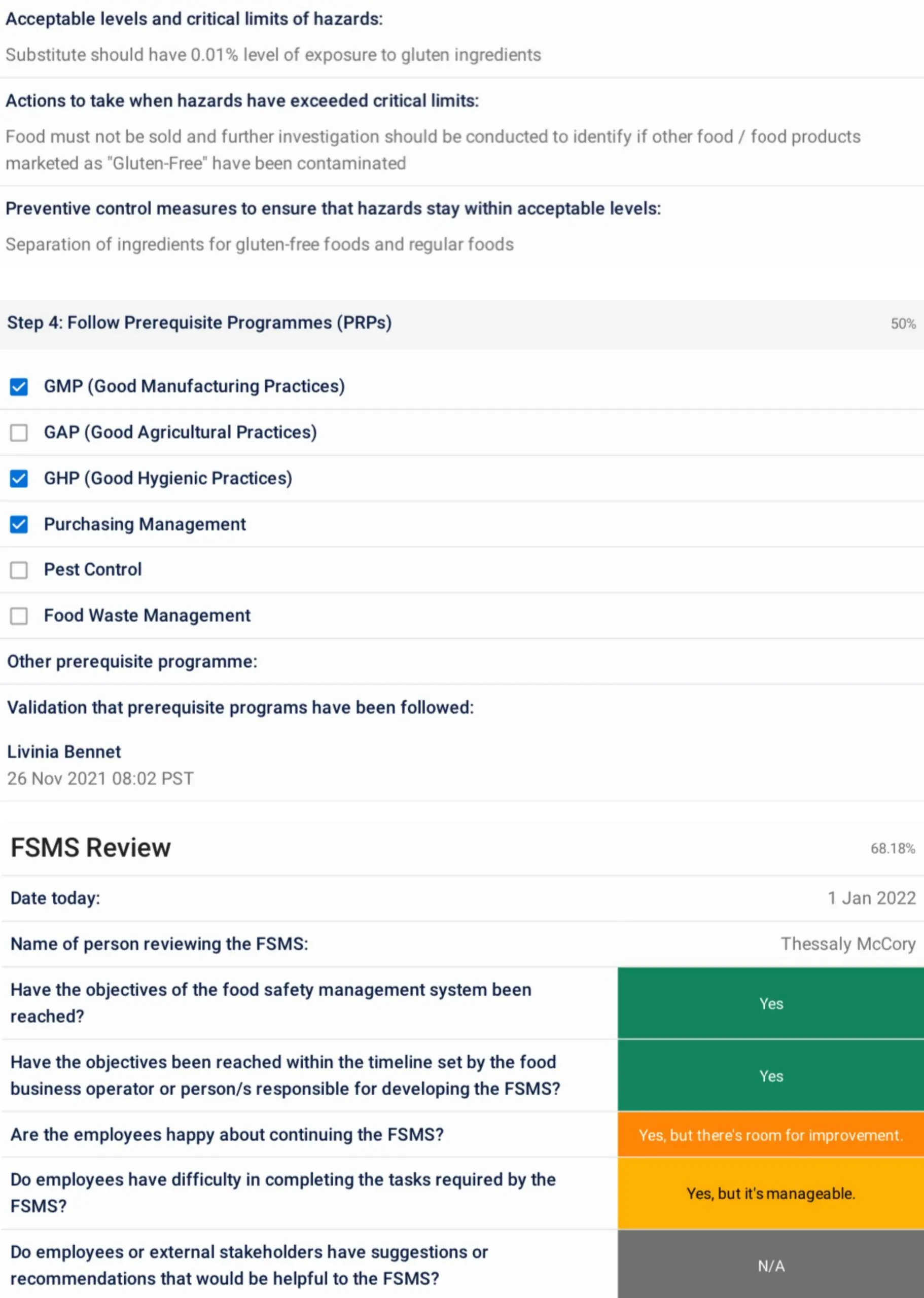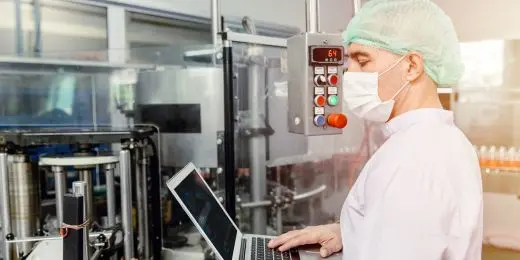What is Food Safety Management System?
Food Safety Management System (FSMS) is a program that aims to prevent food safety hazards from causing adverse health effects on consumers. Food safety management systems also help food business operators comply with international standards and regulations, such as ISO 22000 and the Food Safety Act in the UK.
What is the Purpose of a Food Safety Management System?
The purpose of a food safety management system is to ensure that food is safe to eat and will not lead to outbreaks of foodborne illness among consumers. This also includes managing kitchen safety. Food incidents or concerns about the safety of food and whoever is preparing it can harm the food business operator’s reputation in the industry.
To maintain both valuable partnerships and consumer confidence, a food business operator must have documentation of a food safety management system. Additional benefits of FSMS include:
- Less customer/consumer complaints
- Less food product recalls or returns
- Opportunity for ISO 22000 certification
- Standardized compliance with food laws and standards such as the US’s Hazard Analysis and Risk-based Preventive Controls (HARPC)
What are the Key Elements of Food Safety Management System?
According to ISO 22000, the key elements of food safety management system are:
Interactive Communication
Interactive communication is the building of trust between suppliers, distributors, providers, and consumers of food. While a food business operator may not have access to all of these stakeholders, they should at least know and keep in contact with:
- who they get their food from (the stakeholder directly above them in the supply chain)
- who they give their food to (the stakeholder directly below them in the supply chain)
These two stakeholders should be aware of or actively involved in the creation of the food safety management system. The food business operator should also take into consideration their stakeholders’ preferences, specifications, or requirements when it comes to food safety.
System Management
System management is the method by which Food Business Operators (FBO) ensure the effectiveness of their food safety management systems. Though FBO can use any method that works for them, using the ISO method for system management is recommended. ISO management principles to follow:
- customer focus;
- leadership;
- engagement of people;
- process approach;
- improvement;
- evidence-based decision making; and
- relationship management.
Prerequisite Programmes
Prerequisite programmes (PRPs) are defined by the ISO as basic conditions and activities that are necessary within an organization and throughout the food chain to maintain food safety. According to the Food and Agriculture Organization, examples of prerequisite programmes are:
Hazard Analysis and Critical Control Points (HACCP)
Aside from conducting a hazard analysis, HACCP principles also require food business operators to determine critical control points (CCP) or steps in the process where they have the opportunity to address a food safety hazard. Each CCP must have a critical limit or a minimum/maximum value. The other HACCP principles require the following:
Improve your GRC management
Simplify risk management and compliance with our centralized platform, designed to integrate and automate processes for optimal governance.
Explore nowWhat are the 5 Steps of Food Management System?
Here are the 5 steps of food management system:
Step 1: Identify Needs, Scope, and Objectives
When starting a FSMS, food business operators first need to ask themselves “Why?” (i.e., “Why does my food business need a food safety management system?”). No organization is perfect, and most likely the food business operator has already noticed flaws or issues affecting operations. But these areas of improvement are meaningful, in that they can help the FBO structure the FSMS.
By knowing what needs to be fixed and then crafting the FSMS to suit those needs, the FBO is setting the FSMS for success. Some questions to help them get started:
- What food safety hazards do you usually see or observe going unchecked? (Alternatively, conduct a hazard analysis if you want to be thorough).
- What safe food handling practice is not being followed? (such as lack of cleanliness, poor food storage procedures, wrong heating or thawing methods, etc.)
- What have customers been complaining about?
- What did the health inspector flag or notice in the last health and safety inspection?
- Has the food business experienced any food incidents or been associated with any cases of foodborne illness?
Once the FBO has clearly identified the needs of the food business with regards to food safety, they can move on to the scope. To define the scope of the FSMS, simply ask:
- What can this food safety management system solve and what can it not solve?
- Of the problems that the FSMS can solve, what should be our priorities? (For example, urgent public health concerns should go to the top of the priority list.)
With a priority list of 3 to 5 major problems, the food business operator must now think of a goal or goals that would address and lessen the impact of these problems. The finalized goals will then become the objectives of the food safety management system. Each goal/objective should be S-M-A-R-T: Specific, Measurable, Achievable, Realistic, Timely.
Step 2: Establish a Food Safety Policy
In the context of a FSMS, a food safety policy is how the food business will reach the FSMS objectives. It should outline the management structure that would enable the food business to proceed with changing or improving food safety practices. The policy should also contain procedures for when:
- a customer or consumer (via a third-party) complains; especially if it is a formal complaint or legal action
- a food incident or outbreak of foodborne illness occurs (and is related to the food business)
- food has been deliberately tampered with to be unsafe (food fraud)
- food has been deemed unsafe by the food business through internal or requested third-party audits, reviews, inspections, testing, and other assessments
- food has been declared unsafe by a credible authority (such as the local health council or a national agency) and must be withdrawn/recalled
Step 3: Develop a Hazard Control Plan
For each food or food product being released or sold by the food business, the FBO should create a hazard control plan that includes the following:
- a description of the food or food product
- characteristics of raw materials, ingredients, and product contact materials
- intended use and consumers (if food caters to a specific nutritional goal, need, or preference and if its intended consumers are more vulnerable to adverse health effects)
- processes involved in the preparation, processing, distribution, or handling of food
- hazards that are associated with the food and their risks
- the acceptable levels and critical limits of hazards
- actions to take when hazards have exceeded critical limits
- control measures to ensure that hazards stay within acceptable levels
Hazard control plans should be updated regularly and all employees should be sufficiently trained in how to follow and implement these plans.
Step 4: Follow Prerequisite Programmes
As mentioned previously, examples of prerequisite programmes are GMP, GAP, and GHP. To follow the GMP prerequisite programme, food business operators will need to create standard operating procedures and conduct GMP audits regularly. For the GAP prerequisite programme, FBO will need to assess their site history to identify risks of contamination and monitor the storage and handling of produce.
The GHP prerequisite programme will require food business operators to observe cleanliness of the facility, equipment, and staff. Personal hygiene and regular sanitation should also be enforced. Other prerequisite programmes include purchasing management, pest control, and food waste management.
Step 5: Measure the Effectiveness of the System
Though food business operators should be proactive in maintaining the food safety management system, this doesn’t mean that it is unchangeable. Like any other system or program, the FSMS should be continuously reviewed and improved. A good way to do this is to take a look at the objectives of the FSMS, which should be measurable.
Questions to help assess a food safety management system:
- Have the objectives of the FSMS been reached?
- Have the objectives been reached within the timeline set by the FBO?
- Are employees happy about continuing the FSMS?
- Do employees have difficulty in completing the tasks required by the FSMS?
- Do employees or external stakeholders have suggestions and recommendations that would be helpful to the FSMS?
- Have these suggestions and recommendations been integrated into the current FSMS?
Create your own Food Safety checklist
Build from scratch or choose from our collection of free, ready-to-download, and customizable templates.
Browse Food Safety checklistsFood Safety Management System Example
Maintain an Effective Food Safety Management System Through a Culture of Training
A good and effective food safety management training can help reinforce to your workers the importance of executing best practices toward maintaining a functional and safe FSMS. It can take them through the step-by-step process of how to carry out their tasks safely and effectively, bringing everyone on the same page.
The good news is, training doesn’t have to be a big investment of time or money anymore. Convert your Standard Operating Procedures (SOPs), user guides, and technical standards into interactive, bite-sized training that your team can easily complete in minutes – not days or weeks using SafetyCulture (formerly iAuditor)’s Training. This feature of the world’s top mobile-first platform enables you to easily transform your complicated materials into training slides that are interactive, visually appealing, and easy to understand.
SafetyCulture: Food Safety Management System Software
SafetyCulture is a food safety management system software that’s helped food businesses such as Marley Spoon, and Roma Food Products. With SafetyCulture, you can do the following:
- Conduct inspections, checks, audits, assessments, and more.
- Raise food safety issues and report hazards immediately.
- Assign corrective actions with due dates to employees.
- Capture photos of food safety hazards in inspections and actions.
- Send a report via shareable web link or in PDF format.
- Manage assets, such as tools, equipment, and machinery, among others, to ensure they’re well-maintained and compliant with industry standards on food safety operations.
How to create a FSMS in SafetyCulture? Simply download our free food safety management system template and follow the 5 steps discussed earlier.
Other guides (with free templates) for food businesses:
SafetyCulture has a free plan that includes most of the features and allows you to add up to 9 other users to your account. Download SafetyCulture for free!






